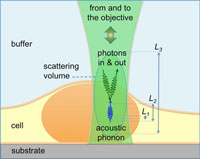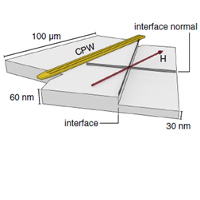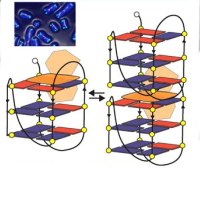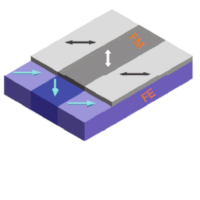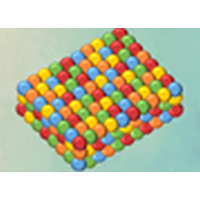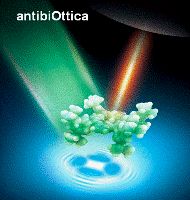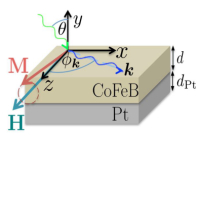Control of spin-wave transmission by a programmable domain wall
Active manipulation of spin waves is essential for the development of magnon-based technologies. Here, we demonstrate programmable spin-wave filtering by resetting the spin structure of pinned 90° Néel domain walls in a continuous CoFeB film with abrupt rotations of uniaxial magnetic anisotropy. Using micro-focused Brillouin light scattering and micromagnetic simulations, we show that broad 90° head-to-head or tail-to-tail magnetic domain walls are transparent to spin waves over a broad frequency range. In contrast, magnetic switching to a 90° head-to-tail configuration produces much narrower and strongly reflecting domain walls at the same pinning locations. Based on these results, we propose a magnetic spin-wave valve with two parallel domain walls. Switching the spin-wave valve from an open to a closed state changes the transmission of spin waves from nearly 100 to 0%. Active control over spin-wave transport through programmable domain walls could be utilized in magnonic logic devices or non-volatile memory elements.
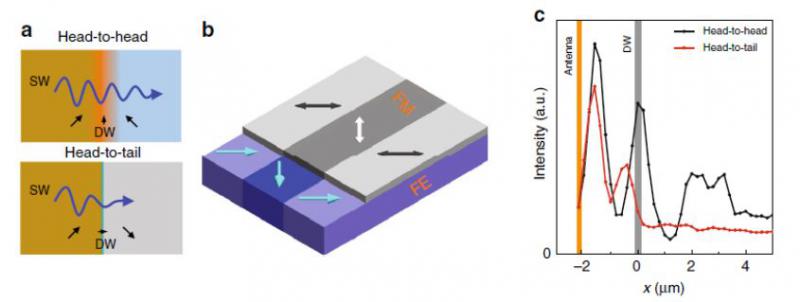
(a) Illustration of the experimental CoFeB/BaTiO3 bilayer system. The domain pattern of the ferroelectric (FE) substrate is imprinted into the ferromagnetic (FM) film via strain transfer and inverse magnetostriction. Blue arrows and double-headed black and white arrows indicate the direction of ferroelectric polarization and the orientation of uniaxial magnetic anisotropy. (b) Magnetooptical Kerr microscopy images of the magnetization configuration in a CoFeB/BaTiO3 bilayer after the application of a magnetic field along the domain boundaries (top) and perpendicular to the domain boundaries (bottom). The left and right images are taken with the magneto-optical contrast axis along the horizontal and vertical direction, respectively (blue arrows). (c) Phase-resolved μ-BLS scans across the pinned domain wall for head-to-head and head-to-tail magnetization configurations.
Sampo J. Hämäläinen, Marco Madami, Huajun Qin, Gianluca Gubbiotti, and Sebastiaan van Dijken, Nat. Communications 9, 4853 (2018).

